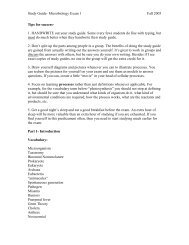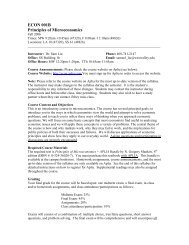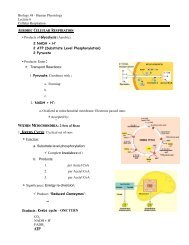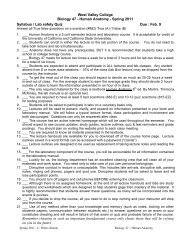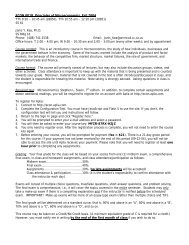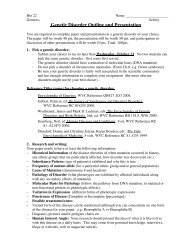The Meth Epidemic - Inside America's New Drug Crisis
The Meth Epidemic - Inside America's New Drug Crisis
The Meth Epidemic - Inside America's New Drug Crisis
Create successful ePaper yourself
Turn your PDF publications into a flip-book with our unique Google optimized e-Paper software.
A young Ohio woman with the tools to take a hit<br />
State and local officials generally give high marks<br />
to the <strong>Drug</strong> Enforcement Administration, which has<br />
increased its meth budget from $127.5 million in fiscal<br />
2001 to $151.4 million in fiscal 2004 (though these<br />
figures exclude major expenses like training costs and<br />
overtime pay for local task forces) -and sends Mobile<br />
Enforcement Teams to areas of the country with limited<br />
resources or experience in dealing with meth. <strong>The</strong> justice<br />
Department is turning up the heat; in a July 18<br />
speech to district attorneys, Attorney General Alberto<br />
Gonzales said that “in terms of damage to children and<br />
to our society, meth is now the most dangerous drug<br />
in America?’ And the drug czar’s office has started to<br />
wake up to the problem: last year, for the first time,<br />
it took a serious look at meth and outlined what<br />
needs to be done to fight it. Its Web site for parents,<br />
www.theantidrug.com, now prominently features in‑<br />
formation like how to “Talk to Your Teen About <strong>Meth</strong>?’<br />
But a growing number of officials around the country<br />
want to see more concrete action from the White House.<br />
<strong>The</strong> drug czar’s office hasn’t made any legislative<br />
proposals, or weighed in on any of those coming<br />
from Capitol Hill; officials there say they want to get<br />
a better sense of what works before throwing their<br />
weight around. Members of Congress whose districts<br />
have been ravaged by the drug are forcing the issue:<br />
the ranks of the House’s bipartisan “meth caucus”<br />
have swelled from just four founding members in<br />
2000 to 118 today, and the group has been fighting<br />
the administration’s efforts to cut federal spending on<br />
local law enforcement. (<strong>The</strong> House has voted to restore<br />
much of the funding; the issue awaits action in the Senate.)<br />
“To the extent that we have to choose between<br />
fighting meth and marijuana, we need to be fighting<br />
meth,” says Sen. Jim Talent, Republican of Missouri,<br />
who along with Sen. Dianne Feinstein, Democrat of<br />
California, has introduced the first big federal bill to<br />
address the problem, which would put strict restrictions<br />
on the sale of pseudoephedrine based products.<br />
On the Hill last week, the deputy drug czar walked<br />
into a buzz saw, as members vented their frustration<br />
over his office’s level of attention to the problem.<br />
“This isn’t the way you tackle narcotics,” said GOP<br />
Rep. Mark Souder of Indiana. “How many years do<br />
we have to see the same pattern at an increasing rate<br />
in the United States until there’s something where we<br />
have concrete recommendations, not another cotton‑<br />
pickin’ meeting? This committee is trying desperately<br />
to say, “Lead!” Despite the congressional clamor,<br />
the White House has been loath to just throw money<br />
at the problem. “<strong>Meth</strong> is a serious priority for us, as<br />
evidenced by programs like drug‑endangered children,<br />
access to recovery, drug courts and community<br />
coalitions, among others,” says Tom Riley, spokesman<br />
for ONDCP. “I’m afraid there’s also an element of<br />
people ‘crying meth’ because it’s a hot new drug?’<br />
<strong>The</strong> policy debate doesn’t mean much to Terry Silvers,<br />
who is one of the victims in this war. Silvers, 34,<br />
worked for 19 years at Shaw carpet mill in Dalton,<br />
Ga., dreaming of the day he could open his own body<br />
shop. He had a wife, three kids and a 401(k), and he’d<br />
never missed more than a few days of work his entire<br />
life. <strong>The</strong> only illegal drug he’d tried was pot, which<br />
he used twice. One day when he was drinking with his<br />
buddies they talked him into doing some meth to wake<br />
him up for the drive home. “I snorted a line and within<br />
five seconds it was like I’d had 12 hours of sleep and<br />
wasn’t drunk anymore?’ Soon, Silvers was snorting<br />
once or twice a week. <strong>The</strong>n someone taught him how to<br />
smoke it. When the thrill wore off, he started injecting:<br />
“firing” or “slamming,” addicts call it. “Golly, it’s the<br />
best feeling you ever had. It’s like your mind is run‑<br />
ning 100 miles an hour, but your feet aren’t moving?’<br />
His weight dropped so drastically from 180 pounds<br />
to 140 pounds. His wife, Lisa, thought he had cancer.<br />
He grew increasingly hyperactive and began having<br />
seizures and hallucinations. When his wife figured out<br />
<strong>The</strong> <strong>Meth</strong> <strong>Epidemic</strong> - <strong>Inside</strong> America’s <strong>New</strong> <strong>Drug</strong> <strong>Crisis</strong>



